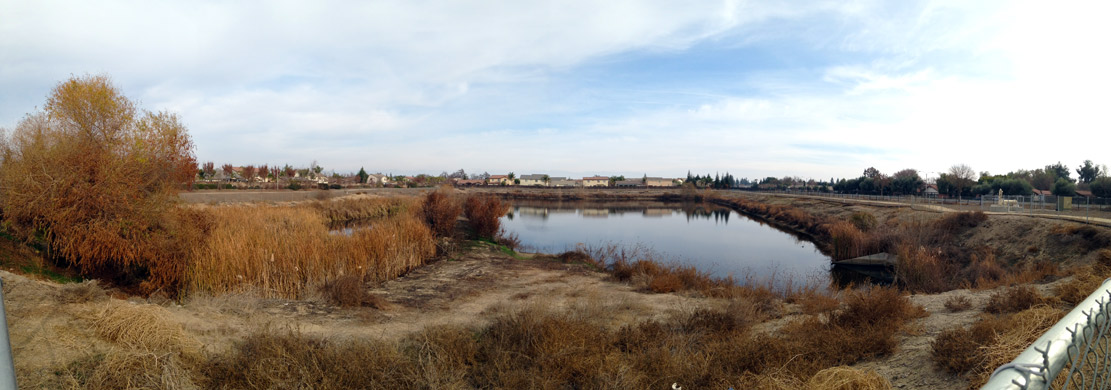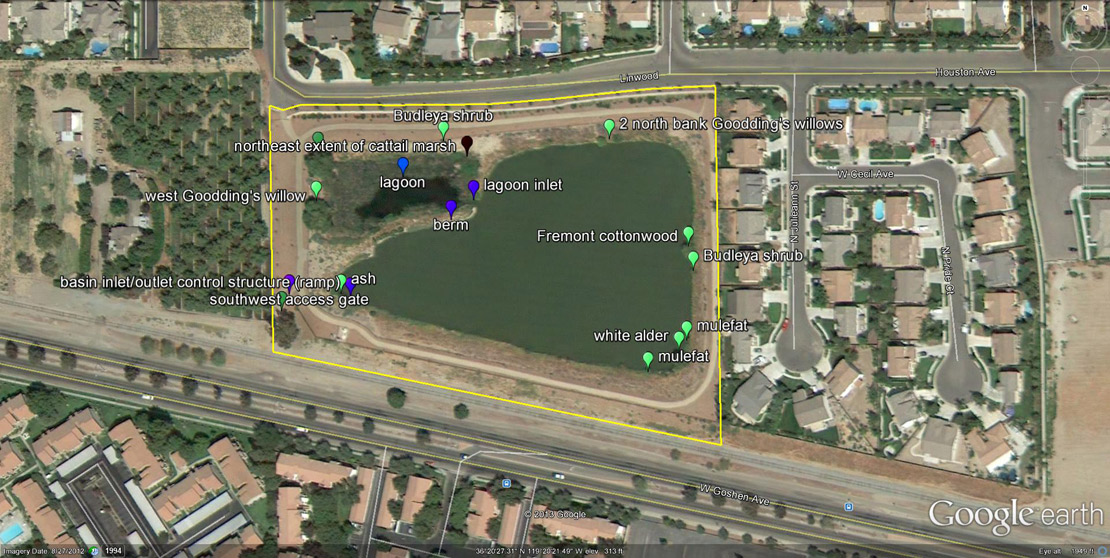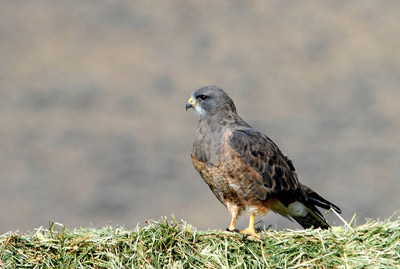102 Bird Species and Counting: Stormwater Basin Habitat
On a brisk January morning just as the sun breached the horizon, most of the morning commuters had already arrived. Like most days, they winged their way to a short or long-duration visit at the pond — a 7.5 acre stormwater retention basin in Visalia, CA.
But it’s not your typical habitat. This one happens to be completely surrounded by suburbia yet offers refuge to a growing number of bird species; a list that has mushroomed to more than 100 as vegetation has blossomed over the last few years.
Urban Bird Foundation is on the frontlines of advocating for and protecting urban and suburban habitats just like this stormwater basin. We are delighted to see barren, mowed basins become habitats that support incredible biodiversity, and serve as neighborhood recreation sites for residents. And it just tickles us to see a couple of western grebes, a flock of hooded mergansers, a gallinule, or a pair of blue grosbeaks buzzing right over suburban homes and streets, and finding foraging and nesting sites amongst concrete and rooftops.

Although this particular site is supporting birds from double-crested cormorants to threatened Swainson’s hawks and 100 other bird species, a stormwater retention basin is a depression to slow, collect, and store stormwater runoff that might cause downstream flooding and erosion. Because these retention basins are designed to store a permanent pool of water, the result can be improved water quality as pollutants and suspended solids, metals, and dissolved nutrients are removed through settling and biological uptake. While basins have traditionally been mowed systems that may include concrete channels, newer, innovative designs are incorporating native plants and trees that allow for greater filtration and improved water quality.
In Visalia, this basin incorporates multiple habitat types. Aside from the larger pond in which the banks have been planted with Goodding’s willow, budleya shrub, Fremont cottonwood, white alder, and mulefat, a berm provides additional sanctuary for shorebirds and separates a lagoon and cattail marsh. And with the addition of walking trails, the site truly becomes a mixed-use habitat in which birds, people, and communities are benefiting from a strategically enhanced stormwater retention basin.
By advocating for and implementing a birds and people approach, we are building and ensuring healthy, nature-integrated communities.




